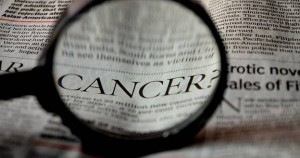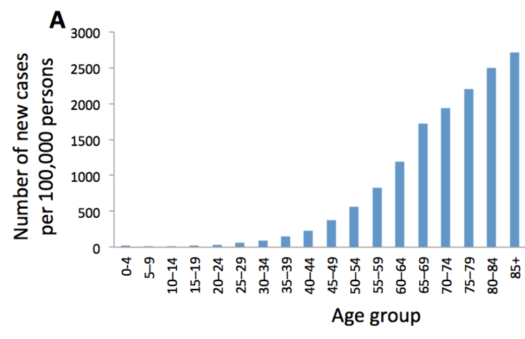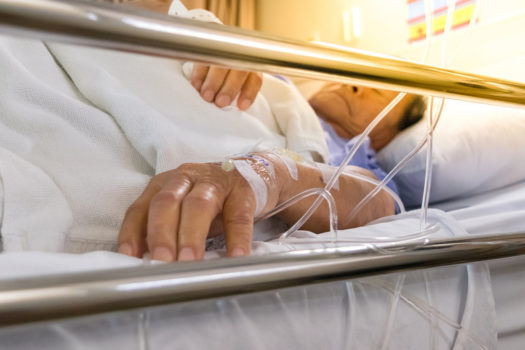 It’s a sobering fact that one in two Australian men and one in three Australian women will be diagnosed with some form of cancer by the age of 85. It’s even more alarming when you consider these statistics do not include the most common skin cancers (basal cell carcinoma and squamous cell carcinoma of the skin). It is estimated hundreds of thousands of Australians are treated for these each year.
It’s a sobering fact that one in two Australian men and one in three Australian women will be diagnosed with some form of cancer by the age of 85. It’s even more alarming when you consider these statistics do not include the most common skin cancers (basal cell carcinoma and squamous cell carcinoma of the skin). It is estimated hundreds of thousands of Australians are treated for these each year.
The number of new cases of cancer diagnosed has increased dramatically in the last three decades. In Australia, 47,445 new cases of cancer were diagnosed in 1982 and 122,093 in 2012. This has led some to think the risks of acquiring cancer are on the increase in modern society.
Of course, increased population accounts for much of the increase in these figures. But the other major factor is modern medicine increasing our lifespan. As we survive diseases and live longer, more of us are succumbing to cancer.
The risk of cancer increases as we age
A closer look at the cancer figures in relation to age at diagnosis shows a clear and dramatic increase in cancer as we age. For children and adults up to their forties, the incidence of cancer is quite low, but then increases quite dramatically as we get older.
 Estimated 2016 age-specific incidence rates for all cancers combined. AIHW analysis of the Australian Cancer Database, Author provided
Estimated 2016 age-specific incidence rates for all cancers combined. AIHW analysis of the Australian Cancer Database, Author provided
The incidence of cancer is around ten times higher in people 60 years and older, than in those under 60.
Cancer: a disease of our genes
So, why is it we’re more likely to get cancer as we get older? Cancer is a disease caused by errors in our genes – the DNA code in our cells that provides the blueprints for all cell functions. These errors arise for a number of reasons.
Chemical carcinogens and radiation are two factors many immediately think of, and can be major players in some cancers. Chemical carcinogens in cigarette smoke contributing to lung cancer and UV radiation contributing to melanoma are two obvious examples.
We can also inherit some genetic errors. For example, defective BRCA genes are passed down in some families and contribute to a number of cancers, including those of the breast and ovary. Some viruses can also contribute to cancer, such as the human papillomavirus (HPV) with cervical cancer.
Another main reason for genetic errors arising, however, comes from normal biology. The body is made up of many trillions of individual cells, and in most cases these individual cells have a defined lifespan.
As these cells die they’re replaced by new cells that arise from the division of another cell into two; a process that requires replication of all of the cell’s DNA.
Despite this DNA replication being highly controlled and very accurate, the sheer number of times it is performed in the lifespan of a person (estimated to be 10,000 trillion times!) means the introduction of a significant number of errors into the DNA of some of our cells from this fundamental process is inevitable.

Longer life means more cancer.
Many gene errors are needed for cancer to develop
So we all have “errors” in our genes. The vast majority of these errors have no effect, or simply add to our individual uniqueness. For example, some “errors” in the MC1R gene have fortuitously given us individuals with red hair.
But some specific errors in certain genes can be “cancer-promoting” by causing the cells to become overactive and not restrained by the usual mechanisms the body cleverly employs to keep every cell in check.
Human cells are incredibly well controlled, with many safety mechanisms. This means single “cancer-promoting” errors in the DNA code of a cell do not cause cancer. Instead, many different “cancer-promoting” errors are required in genes that control specific types of cell processes, like cell division, programmed cell death and cell movement.
Studies have shown the number of different “cancer-promoting” genetic errors required in a single cell is at least six. For the development of most cancers it is likely many more are needed. Only when all of these errors are present in the same cell can that cell have a chance to progress to producing a cancer.
To accumulate the “right” set of errors to drive transformation of a normal cell into cancer normally takes a long time. Thus, the longer we live, the more time there is for errors in our genes to accumulate.
At present there is not much we can do to prevent ageing. But we can reduce risks from external factors, such as avoiding chemical carcinogens like those in cigarette smoke, reducing exposure to UV radiation from the sun and, where appropriate, participating in vaccination programs for HPV.
Written by Stuart Pitson NHMRC, Senior Research Fellow, Centre for Cancer Biology, University of South Australia and published by The Conversation ~ January 27, 2017.
FAIR USE NOTICE: This site contains copyrighted material the use of which has not always been specifically authorized by the copyright owner. We are making such material available in our efforts to advance understanding of environmental, political, human rights, economic, democracy, scientific, and social justice issues, etc. We believe this constitutes a ‘fair use’ of any such copyrighted material as provided for in section 107 of the US Copyright Law. In accordance with Title 17 U. S. C. Section 107, the material on this site is distributed without profit to those who have expressed a prior interest in receiving the included information for research and educational purposes. For more information go to: http://www.law.cornell.edu/uscode/17/107.shtml“
